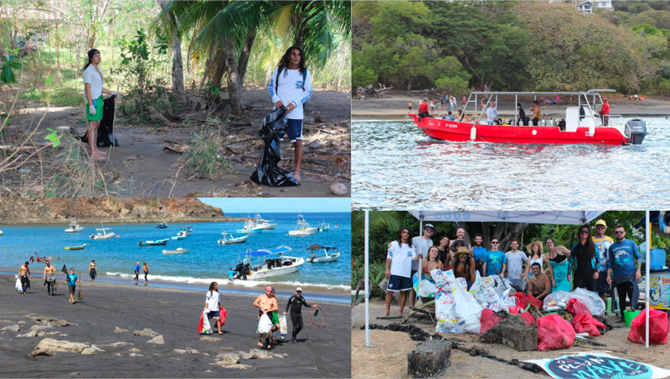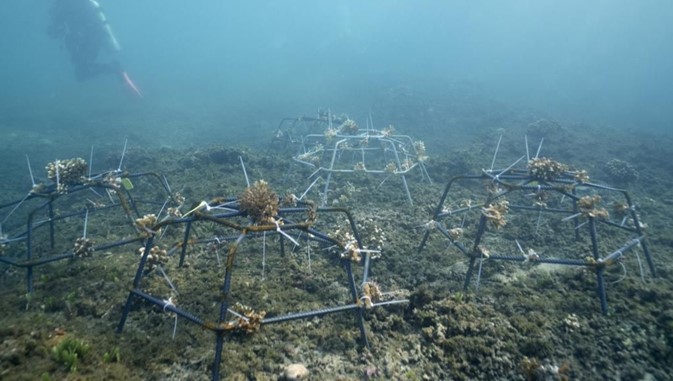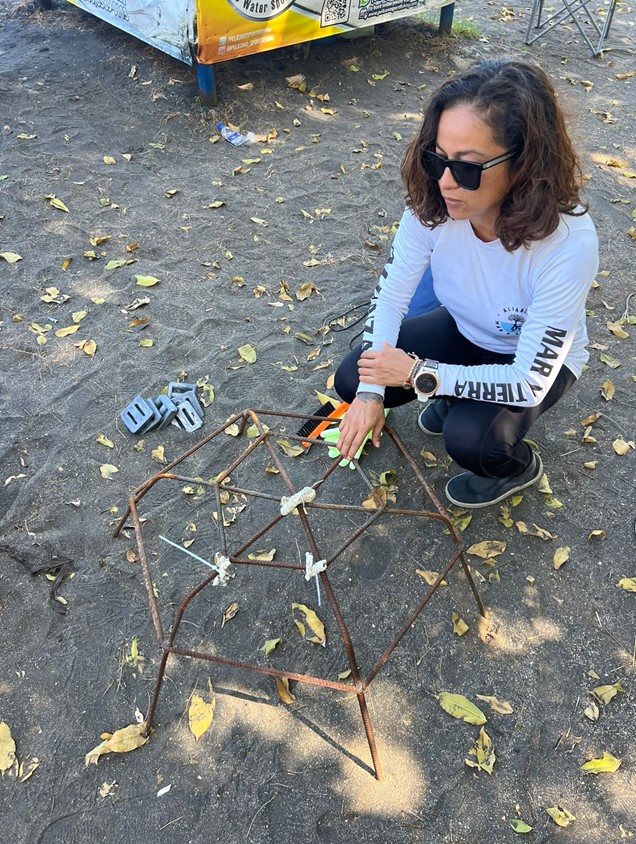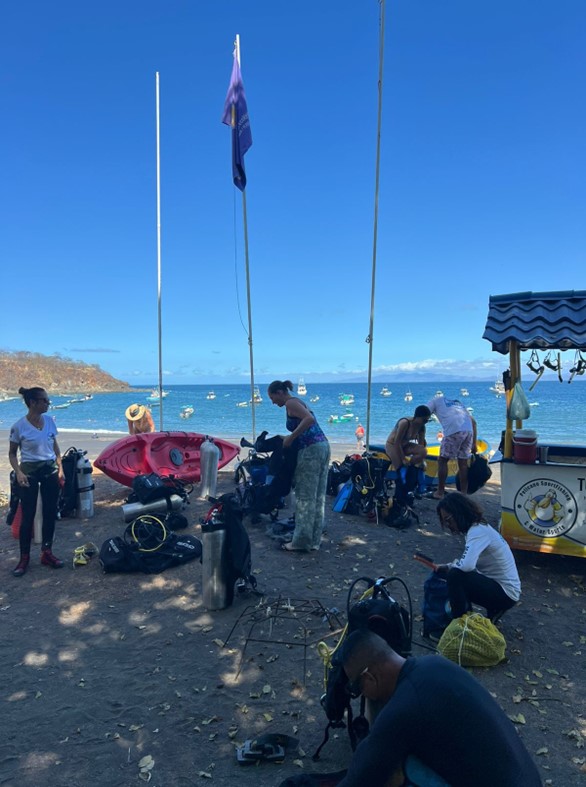| mathieu
Alianza Mar y Tierra Association
A coral conservation association: Alianza Mar Y Tierra
The COVID-19 health and economic crisis has affected tourism more than any other sector, and for Costa Rica the repercussions of the shutdown have been severe. From one day to the next, thousands of Costa Ricans found themselves without jobs or financial security. Experts agreed that tourism had to reinvent itself. Recovering the pre-COVID-19 tourism model was not enough. Not only because consumer attitudes could change, but also because the pandemic showed that the effects of globalization, with the flow of people, accelerated the spread of viruses. Tourism as it operated before the pandemic was no longer viable, and we had to think about rebuilding it on a more sustainable basis, with greater respect for host communities and the environment. On the Pacific coast of Guanacaste province (as in many other areas), tourism provided a livelihood for the majority of the inhabitants, so they had to invent strategies to set up new projects. It was in this context that the association Alianza Mar y Tierra This citizens' initiative brings together residents of Playas del Coco and Playa Ocotal to create projects for the conservation, management and restoration of marine and terrestrial species. The association aims to develop an open, citizen-based science that will serve as the basis for designing, supporting and implementing actions to restore ecosystems. What's more, Alianza Mar y Tierra aims to promote environmental governance in the various territories of the zone.
What is open science?This is a process in which untrained people become involved in scientific research. Through specific training, they develop skills in restoration and biological monitoring. |
- cleaning Playa Ocotal and the seabed
- planting trees such as almond, capulin and arbutus
- cleaning the road from Playas del Coco to Playa Ocotal
- introduction of an environmental education program in the region's schools and colleges
- and a coral restoration program at Playa Ocotal.
 This coral restoration program has been developed in partnership with theNational University of Costa Rica and the CIMAR scientific center. Maria José Solano, a marine biology student in this laboratory, is currently carrying out her research there. Her thesis is entitled : Ocotal reef restoration: open science for ecosystem restoration and ecological monitoring of the Ocotal coral reef and Snake Bay.
According to the report by the Intergovernmental Panel on Climate Change (IPCC), it is estimated that at this rate, by 2050, climate change will lead to the disappearance of 70 to 90 % of coral. The situation is therefore worrying, and action is urgently needed. Local residents have formed an association to implement this restoration program.
This coral restoration program has been developed in partnership with theNational University of Costa Rica and the CIMAR scientific center. Maria José Solano, a marine biology student in this laboratory, is currently carrying out her research there. Her thesis is entitled : Ocotal reef restoration: open science for ecosystem restoration and ecological monitoring of the Ocotal coral reef and Snake Bay.
According to the report by the Intergovernmental Panel on Climate Change (IPCC), it is estimated that at this rate, by 2050, climate change will lead to the disappearance of 70 to 90 % of coral. The situation is therefore worrying, and action is urgently needed. Local residents have formed an association to implement this restoration program.
What is coral and what is it used for?Corals are marine animals (polyps) that live in symbiosis with algae. (plants) and produce a calcium carbonate skeleton (rocks). As animals, they feed on organisms that live in water. They breathe like humans and produce waste like all animals. Healthy coral reefs provide habitat, food and nurseries for many aquatic species, including commercially important fish species. They are also a major tourist attraction for snorkellers and divers. |

 So, for almost a year now (April 2023), a group of volunteer citizens from the village have been coming every fortnight to maintain the structures and make sure the corals are growing well. You can read in the eyes of these inhabitants their emotion and wonder at seeing these little creatures grow. Beatriz - a Spanish diving instructor who has been living in Playas del Coco for several months - has taken part in many projects of this type in other parts of the world, including Thailand and Spain. When you listen to her talk, you realize just how precious corals are for our ecosystems and for the survival of species.
Luna, one of the association's co-founders, juggles her job conserving turtles on Matapalo beach with her new role as manager of an NGO with Alianza Mar y Tierra. The association is growing and setting up partnerships; it can now count on the help of local diving centers for the loan of equipment and the Costa Rican Red Cross (rescue divers) to lend a hand. The project is no longer just for local residents, but for everyone!
And yes, tourists on vacation in the area can come and meet the founders of the association and spend a day with them to understand the restoration process in more detail and, above all, help develop this nursery. Depending on the season and the recommendations of the CIMAR research center, holidaymakers can come and replant coral fragments and ensure their regular upkeep by diving or snorkeling.
So, for almost a year now (April 2023), a group of volunteer citizens from the village have been coming every fortnight to maintain the structures and make sure the corals are growing well. You can read in the eyes of these inhabitants their emotion and wonder at seeing these little creatures grow. Beatriz - a Spanish diving instructor who has been living in Playas del Coco for several months - has taken part in many projects of this type in other parts of the world, including Thailand and Spain. When you listen to her talk, you realize just how precious corals are for our ecosystems and for the survival of species.
Luna, one of the association's co-founders, juggles her job conserving turtles on Matapalo beach with her new role as manager of an NGO with Alianza Mar y Tierra. The association is growing and setting up partnerships; it can now count on the help of local diving centers for the loan of equipment and the Costa Rican Red Cross (rescue divers) to lend a hand. The project is no longer just for local residents, but for everyone!
And yes, tourists on vacation in the area can come and meet the founders of the association and spend a day with them to understand the restoration process in more detail and, above all, help develop this nursery. Depending on the season and the recommendations of the CIMAR research center, holidaymakers can come and replant coral fragments and ensure their regular upkeep by diving or snorkeling.

 This citizens' initiative, which first appeared as an alternative to tourism during the pandemic, has now finally become a way of combining the preservation of ecosystems with vacations. Every traveler's environmental and social impact counts, and it's up to all of us to see how we can contribute to the preservation of the planet's ecosystems. positive development integral tourism, respectful of the areas we visit.
This citizens' initiative, which first appeared as an alternative to tourism during the pandemic, has now finally become a way of combining the preservation of ecosystems with vacations. Every traveler's environmental and social impact counts, and it's up to all of us to see how we can contribute to the preservation of the planet's ecosystems. positive development integral tourism, respectful of the areas we visit.